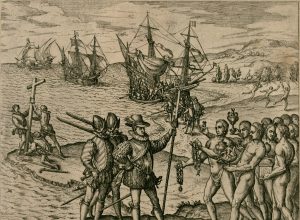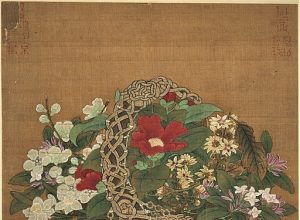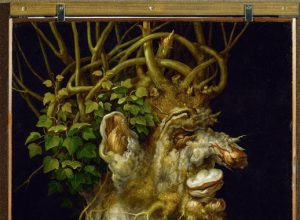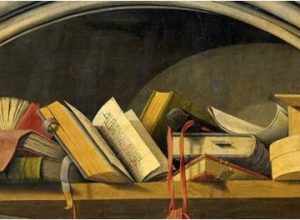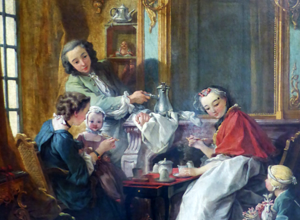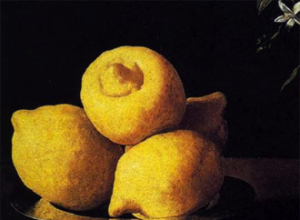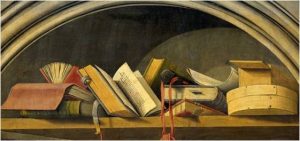
Charles Sterling is among those museum curators whose originality is to be rediscovered. Having had to flee Vichy France and the Nazi Occupation during World War II, he never was able to create exactly the kind of exhibition he wanted to organize until the Spring of 1952, when he presented his European retrospective The Still Life from Antiquity to Today at the Orangerie in the Tuileries Gardens. This exhibition served as the manifesto for his way of doing art history. Sterling’s choice of a longue durée presentation allowed him to investigate both art from the past and art up to and including that of contemporary artists who, in 1952, were recording the first signs of modern life. Marie Tchernia, who defended her excellent dissertation on Sterling’s career, looks back for us on this presentation of still lifes. We necessarily see things differently today, but the charting of this corpus is still of the greatest interest to us, since its author took a broad view and obstinately believed in an “international culture.”
Laurence Bertrand Dorléac
Marie Tchernia-Blanchard
In the Spring of 1952, the Orangerie Museum held the first European retrospective devoted to The Still Life from Antiquity to Today. A veritable manifesto for the views of Charles Sterling on exhibitions and, beyond these, on erudition in general, that arts event was followed by the publication of a summary work of the same name, which undeniably constitutes the author’s greatest publication success [ref]There were indeed no less than three French editions of this work (Pierre Tisné, 1952; new revised edition, 1959; and Macula, 1985), two American editions (New York: Universe Books, 1959, and Harper & Row, 1981), a Polish edition (Warsaw: Wydawnictwo Naukowe PWN, 1998), and even an unauthorized Romanian edition (Bucharest: Meridiane, 1970).[/ref] but also was the one that generated the liveliest criticism. From the project’s genesis to the historiographical discussions of which it has been the object, what we propose to examine is the import of Sterling’s investigations into the history of the painting of immobile things and, more specifically, what they reveal to us about a singular conception of the role of the art historian.
The First Temporary Exhibition Designed Entirely by Sterling
The first temporary exhibition for which Sterling was entirely responsible, The Still Life from Antiquity to Today, occupies a special place in the intellectual career of this curator who perhaps chose to work on “a great subject that concerns several schools and several centuries”[ref]Charles Sterling, “Entretiens avec Michel Laclotte,” in Nicole Reynaud, ed., Hommage à Charles Sterling: des primitifs à Matisse (Paris: Réunion des Musées Nationaux, 1992), pp. 53-104; quotation from p. 93.[/ref]» in order to offer new visibility for his research. He thus chose the still life, which has experienced three periods of favor in European painting (Antiquity, the seventeenth century, and the twentieth century), for he wished to investigate “the reasons for this historical pacing, its fads, and its reticences.” [ref]Sterling, “Sur la peinture des choses immobiles,” in La Nature morte de l’Antiquité à nos jours, exhibition catalogue (Paris: Musée de l’Orangerie, 1952), pp. XIII-XXXV; see: p. XIII.[/ref] That allowed him to address two distinct objectives.
The first objective, aesthetic in nature, aimed to give contemporary artists, who were particularly sensitive to the visual-arts possibilities the still life offered, the an opportunity of confronting their conception of this subject with all those that have followed one another in the course of two thousand years.” [ref]Sterling, Foreword, in Still Life Painting: From Antiquity to the Twentieth Century (New York: Harper & Row, 1981), p. 9.[/ref] The second, historical in nature, consisted in a rethinking of the question of the origins of the modern still life, which are traditionally situated north of the Alps at the end of the sixteenth century. Now, and this is the crucial issue at stake in his argument, this idea rests, according to him, on a misappreciation of the importance of the humanist spirit of the Italian Quattrocento, which, in resuscitating the traditions of Antiquity, “rendered possible the emancipation of still life at the same time as that of the landscape and other subjects destined to develop into independent branches of painting.”[ref]Ibid.[/ref]
To back up his demonstration, which was based on establishing a direct line of descent from Hellenistic still-life painting to the reappearance of this motif in the fifteenth century, Sterling had to lay out a particularly ambitious plan of action in the rooms of the Orangerie.
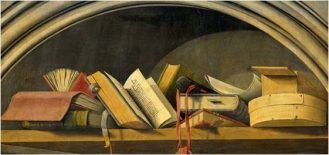
Fig. 1. Barthélemy van Eyck, Still Life with Books in a Niche, 1442-1445, oil on wood, 30 × 56 cm, Amsterdam, Rijksmuseum (Inventory no. SK-A-2399).
He thus succeeded in obtaining the loan of two Roman paintings, from Herculaneum and Pompeii, that are today preserved in the Museo Nazionale of Naples, and he even had a copy of a Roman mosaic made for the occasion from an original found in the Villa of the Quintilii. While the gradual emancipation of the still life as autonomous figurative subject was illustrated only through Nordic paintings, specifically Still Life with Books in a Niche (fig. 1), a panel cut from the Aix Annunciation, and especially the panel Sterling considered the first independent still life entirely devoid of symbolic and religious meaning, Der Schrank mit Flaschen und Bücher (Cupboard with bottles and books, fig. 2), attributed to the German School, ca. 1470-1480, what he intended to prove was the importance of Humanist thought in the development of this genre by evoking the tradition of Italian marquetry.
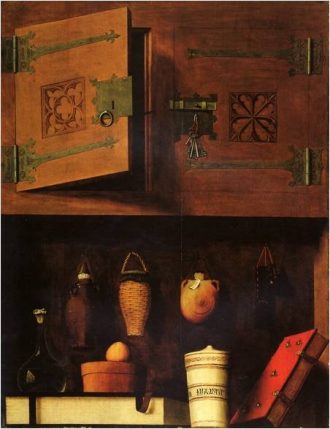
Fig. 2. Anonymous (German), Der Schrank mit Flaschen und Bücher (Cupboard with bottles and books), ca. 1470-80, oil on wood, 106 × 81 cm, Colmar, Unterlinden Museum.
Unfortunately, he did not succeed in bringing to Paris an example dating from the Quattrocento, and he had to be content with presenting two panels by Vincenzo of Verona, dating back to the years 1520-1523 and belonging to the Louvre Museum, one of which represents the oldest known modern example of a Vanity (fig. 3). This particular motif, whose invention had previously been linked to the traditional representation, north of the Alps, of the figure of Saint Jerome Meditating in his Cell, allowed him, moreover, to raise the issue of how patterns circulated among different artistic centers.
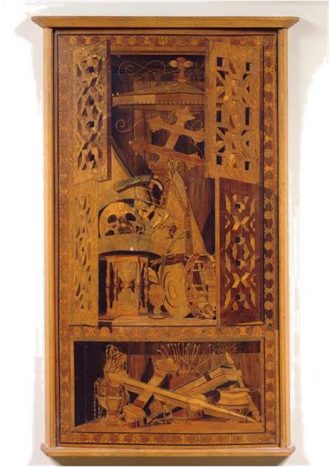
Fig. 3. Vincenzo of Verona, Attributes of Vanity, marquetry, 1520-1523, 118.5 × 61 cm, Paris, Louvre Museum (Inventory no. OA7823).
In his view, such circulation expressed an affinity of mind, a particular penchant for still life characteristic of certain artists, which shines through across the centuries beyond differences in interpretation and modes of representation. The variety of possible analyses was nonetheless illustrated in the subsequent sections of the exhibition, wherein he offered, for all intents and purposes, a “complete history of painting [limited] to still life alone.”[ref]Sterling, “Sur la peinture des choses immobiles,” p. XXXII.[/ref]
From the Catalogue to the Summary Work: The Demonstrative Value of the Exhibition
The intensity of interest Sterling developed in the 1930s regarding the demonstrative value of temporary exhibitions continued unabated when he began work on this project, whose catalogue “went far beyond the dimensions ordinarily accorded to this kind of writing.”[ref]Germain Bazin, “Lettre au directeur des musées de France,” in La Nature morte de l’Antiquité à nos jours, exhibition catalogue, p. VI.[/ref] And yet, despite the breadth of the critical apparatus present in that volume, its author chose to draft a second work on the issue, which summed up its main features.
Independent of its potential financial benefit, this initiative can obviously be explained by Sterling’s desire to overcome “the usual obstacles to ephemeral showings . . . : the state of preservation of certain works preventing them from being removed, refusal or statutory prohibition to lend pictures, limited space available in the exhibition rooms,”[ref]Sterling, Foreword, Still Life Painting: From Antiquity to the Twentieth Century, p. 10.[/ref] the absence of any work by Caravaggio at the Orangerie constituting a striking example.[ref]See, on this topic, Sterling, “En préparant l’exposition de la nature morte,” in La Revue des arts, 1 (1952): 31-36, quotation from p. 34, and in the French National Archives: 20150160/6.[/ref]
But one must undoubtedly also see in the drafting of this second work a desire to respond to the (to say the least) lukewarm reception from the scholarly community, which in some cases denounced the weakness of the demonstration,[ref]Roberto Longhi, “ La mostra della natura morta all’Orangerie,” in Paragone, 3 (1952): 46-52; quotation from p. 47.[/ref] nay even contested its pertinence, on the ground that the main interest of the still life could be said to reside in the fact that it does not constitute so much an autonomous motif as a forma mentis pictoriae.[ref]Vitale Bloch, “Still Life at the Orangerie,” in The Burlington Magazine, 94 (1952): 208-209.[/ref]
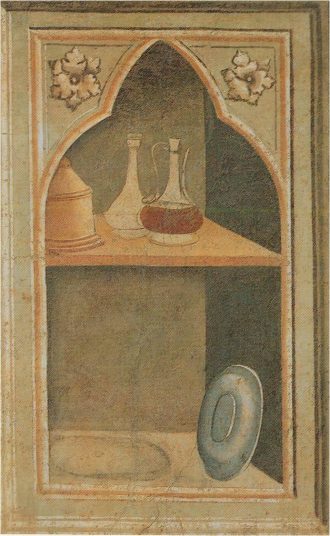
Fig. 4. Taddeo Gaddi, Niche with Paten, Pyx and Ampullas, 1337-1338, fresco, Florence, Basilica di Santa Croce, Baroncelli Chapel.
It may therefore be thought that the exhibition catalogue did not, in its traditional typology, by itself alone allow the implementation of an argument that would be sufficiently detailed to stand up to those kinds of criticisms and that the publication of a summary work offered Sterling the possibility of submitting to a broader reading public an “improve[d]” and “complete[d]”[ref]Sterling, Foreword, Still Life Painting: From Antiquity to the Twentieth Century, p. 10.[/ref] view of the theses presented at the Orangerie.
And yet, even though the very bases of the author’s theory had not been accepted in unanimous fashion,[ref]See, in particular, Ingvar Berström, Dutch Still-Life Painting in the 17th Century (1947; London: Faber & Faber, 1956).[/ref] it was not this precise point that occasioned the most virulent criticisms lodged against his second volume. On the contrary, the concomitant publication, by Charles de Tolnay, of two small Taddeo Gaddi frescoes (fig. 4), executed in 1337-1338 in the Baroncelli Chapel of the Basilica di Santa Croce in Florence and representing two niches filled with “familiar objects constituting veritable isolated still lifes,”[ref]Charles de Tolnay, “Les origines de la nature morte moderne,” in La Revue des Arts, 2:3 (1952): 151-52.[/ref] corroborated his argument inasmuch as it allowed him to prove that Italian marquetry executed in the 1460s for the Duomo di Modena fit into a trompe-l’oeil tradition, more than a century old, whose most eminent representatives may be said to have been Giotto, Duccio, and Gaddi.
The main criticisms lodged against his volume touched rather on the rhetorical devices implemented by the author in order to justify, in several chapters, what pertains more to a personal appreciation than to a genuine scholarly demonstration or, to quote Ernst Gombrich, the temptation of “the sensitive critic at work constructing such a historical map of an expressive medium” [whose] “labels […] only communicate meaning within an articulated tradition.”[ref]Ernst Gombrich, “Tradition and Expression in Western Still Life,” The Burlington Magazine, 103 (1961): 175-180; reprinted in Meditations on a Hobby Horse: and Other Essays on the Theory of Art, 3rd ed. (Oxford: Phaidon, 1978), p.100.[/ref] More generally, while Gombrich recognized the solidity of the reasoning that led Sterling to connect the origins of the modern conception of the still life to Renaissance Humanism,[ref]Ibid., p. 101.[/ref] he noted that Sterling was “on less reliable ground when he wants to trace this innovation back in an unbroken line to Greek painters of the Hellenistic period.”[ref]Ibid., p. 103.[/ref] The fact that this part of his reasoning was supported only by “somewhat elusive”[ref]Ibid.[/ref] literary sources and by works from the Roman era whose faithfulness to Hellenistic models has never been challenged, while it does not invalidate Sterling’s thesis, renders it impossible, according to Gombrich, “to confirm this hypothesis in its extreme form.” Now, that is precisely the way in which Sterling made up for the absence of historical documentation with psychologically-based arguments Gombrich condemned. Gombrich criticized Sterling in the end for having made his interpretation of the history of still lifes rest only on the literary transposition of a series of expressive pictorial qualities, such as “bourgeois opulence,” “intimacy,” the “heroic still life,” or the “humble and mystical” still life, which are by nature subjective, subject-related, not taking sufficiently into account the weight of tradition—that is to say, a series of objective factors—and ignoring the fact that “art is a social activity yielding to social pressures.”[ref]Ibid., p. 105.[/ref]
The Work of Art as “Visual Fact” and Defense of a Singular Interpretive Model
While the positions Gombrich took did not have any real effect on the work’s commercial success, the appearance of a new edition of this text, more than thirty years after the close of the exhibition, may seem all the more surprising, given Sterling’s distrust of summarizations, since he thought “that they are inevitably superficial and outdated about some point the day after their publication.”[ref]Albert Châtelet, “Charles Sterling (1901-1991),” in Bulletin monumental, 150:1 (1992): 49-54; quotation from p. 51.[/ref]
To hear him tell it, the study of European still lifes may be said to avoid this rule inasmuch as, despite the proliferation of studies on this topic, the few features that have since altered the interpretation thereof can be summed up in the Foreword to the new edition without it being necessary to rectify the body of the text in any substantial way. Beyond the obvious weaknesses of such a pronouncement, it is especially apparent that the republication of his work constituted for him an effective means of challenging certain recent epistemological orientations.
The paragraphs he devotes to the catalogue of the 1979 Stillleben in Europa exhibition[ref]Stillleben in Europa, exhibition catalogue (Münster: Westfälisches Landesmuseum, 1979).[/ref] are therefore particularly eloquent and can be read as a disguised answer to the criticisms Gombrich had addressed to him.
Even though it did not cover as extensive a period as Sterling’s retrospective, the German exhibition presented a vast panorama of still lifes from the turn of the sixteenth century to Pop Art. In this regard, as he himself recognized, “it is a most ambitious attempt to analyze all aspects, all categories and sub-categories of still-life painting in the light of changing economic, social, religious and philosophical conditions.”[ref]Sterling, Foreword, Still Life Painting: From Antiquity to the Twentieth Century, p. 22.[/ref] He nonetheless denounced the overly doctrinaire character of this approach, whose rigidity has particularly harmful consequences for the very design of exhibitions, as it deliberately holds at arm’s length any form of aesthetic considerations. Nothing, in short, is further removed from Sterling’s own critical approach, since for him “the main tool of the historian remains a sensitive and precise analysis of pictorial language, however important the reading of a work of art may be as an intellectual message and a mirror of the social life of the past,” in the sense that “the exact evaluation of the work of art as a visual fact is essential, precisely in the context of the concrete circumstances of life. It is crucial to the birth of the still life painting.”[ref]Ibid., p. 23[/ref]
While today it appears impossible to envision the sequences that punctuated the development of the still life from Antiquity to the twentieth century in terms of the interpretive model defended by Sterling and while, since 1985, numerous works have continued to shift one’s attention toward other problems and issues, his investigations no less remain groundbreaking: groundbreaking for the history of this genre, be it only through the number of discussions to which they have given rise; groundbreaking, too, for the development of the temporary exhibition in the twentieth century. Despite the legitimacy of the criticisms that could have been addressed against it, the plan of action implemented in the first European exhibition devoted to the still life through the ages attests to the fact that the role assigned to this sort of arts event, to the foregrounding of its aim, and to its dissemination is in the process of evolving. In a sense, it is therefore through his decision to use the demonstrative procedure he mastered the best—that of the temporary exhibition—as a privileged means of access to a development far surpassing traditional limits that Sterling prefigured a new orientation for the practice of exhibition making, as applied to novel issues, which he himself had summed up in the following terms: “only a generous mutual understanding can permit such collections, in a few rooms, of works separated by centuries and by oceans; such encounters are like a miracle. In our age, it is perhaps the sole miraculous fruit of what we like to call international culture.”[ref]Sterling, “En préparant l’exposition de la nature morte”, p. 36.[/ref]
Bibliography
BERSTRÖM, Ingvar. Dutch Still-Life Painting in the 17th Century. 1947. London: Faber & Faber, 1956.
GOMBRICH, Ernst. “Tradition and Expression in Western Still Life.” The Burlington Magazine, 103 (1961): 175-180.
La Nature morte de l’Antiquité à nos jours. Exhibition catalogue. Paris: Musée de l’Orangerie, 1952.
STERLING, Charles. “En préparant l’exposition de la nature morte.” La Revue des Arts, 2:1 (1952.)
_____. Still Life Painting: From Antiquity to the Twentieth Century. New York: Harper & Row, 1981.
Stillleben in Europa. Exhibition catalogue. Münster: Westfälisches Landesmuseum, 1979.
TOLNAY, Charles de. “Les origines de la nature morte moderne.” La Revue des Arts, 3 (1952): 151-52.
After completing her Master’s degree at the University of Paris IV-Sorbonne, Marie Tchernia-Blanchard joined the École du Louvre, where she has specialized in the history of the history of art. Following her first two research papers, which bore on the Écrits et engagements politiques d’Henri Focillon (1931-1943) (Writings and political commitments of Henri Focillon [1931-1943]) and Historiens de l’art français en exil aux États-Unis pendant la Seconde Guerre mondiale (Historians of French art exiled in the United States during World War II), she prepared, under the joint supervision of Pierre Sesmat and François-René Martin, a dissertation entitled Le Style comme civilisation: Charles Sterling (1901-1991), historien de l’art, which she defended at the University of Lorraine in June 2016. She was a research fellow at the French National Institute of Art History (INHA) between 2009 and 2013, and she received a Daniel and Nina Carasso research grant at the École du Louvre in 2013-2014. Since September 2014, she has been teaching the History and Theory of the Arts for the multidisciplinary postgraduate academic program at the Sciences and Letters Faculty of the University of Paris.
